The Swedish military started using the Browning machine gun design shortly after World War I, and chose it initially because its closed-bolt design made it simple to synchronize with an aircraft propeller. About 170 commercial 1919 models were purchased from Colt for aerial use. They were effective and well-liked guns, and by 1929 the Swedish army adopted a water-cooled version used on existing Schwarzlose tripods (the Swedes had primarily used Schwarzlose guns, and Hotchkiss guns to a lesser extent). This gun, called the M/14-29, was effectively a Browning model 1917 with minor cosmetic differences. Until 1932, all of the Swedish Browning guns were chambered for the standard Swedish 6.5×55 (m/94) rifle cartridge.
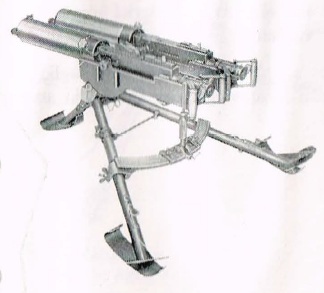
What happened in the 1930s was the independent development of both a much heavier machine gun cartridge and a sophisticated mounting system for the Browning.
It was determined that the 6.5mm rifle cartridge, while ideal for shoulder weapons, was too light to take full advantage of a heavy gun like the Browning, and a heavier round was desired. The result was adopted in 1932; an 8x63mm cartridge that fired a 220 grain bullet at 2500fps (this being roughly 25% more energy that the US M2 .30-06, and 50% more than the m/94 6.5×55 cartridge). It was the same overall length at the .30-06, which allowed it to fit in the standard Browning receiver, but used a larger diameter case and slightly rebated rim. The heavier bullet weight in particular allowed longer effective range – maximum range was determined to be 5500 meters (just over 6000 yards). This allowed greater indirect fire range as well as greater effective altitude when used in an antiaircraft role.
This heavy cartridge required a particularly stable mount for most effective use, of course, and by fortunate coincidence just such a mount was being developed in the mid 1930s. The Swedes were very interested in indirect fire, and in 1936 adopted a new mount based around a recoil-buffering cradle. A heavy spring was built into an extension for the standard Browning recoil buffer, and this device mounted inside a cradle with the gun. The cradle was then mounted on a tripod, along with a sophisticated traverse and elevation mechanism. This tripod allowed precision aiming and also absorbed much of the recoil from the guns, making it an excellent platform for effective long range shooting. In the second volume of his landmark treatise on the Browning (The Browning Machine Gun Vol II: Rifle Caliber Brownings Abroad), Dolf Goldsmith remarks that this arrangement “was undoubtedly the most accurate long-range rifle-caliber machine gun ever made”.
For antiaircraft use, the m/36 was also built and issued in a dual-gun configuration, called the m/36 Lv Dbl. Rather than using two standard guns, the double setups used matching pairs of right-hand and left-hand feed guns, to simplify feeding and ammunition supply. Only the left-hand gun was equipped with sights. The Lv Dbl mounts used the same basic buffered cradle design as the standard m/36, which meant that each pair of guns had four spade grips. Each gun had only one trigger, though, so the double guns could be fired by holding the outermost two grip handles, where the triggers were located.
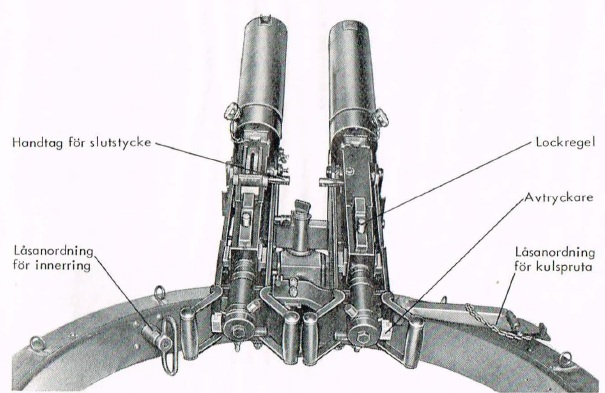
The m/36 guns were a mainstay of Swedish defenses during World War II, with about 12,000 being manufactured between 1939 and 1941. The guns remained in service until the 1990s, having been refitted for 7.62 NATO caliber in 1966 (although older 6.5mm and 8mm barrels were still used for training with older ammunition stocks).
We have a copy of a 1966 manual on the m/36 Lv Dbl configuration, which can been downloaded here or form the Kulspruta m/36 page in the Vault. It is in Swedish, but has useful and interesting pictures for those who don’t read the language.
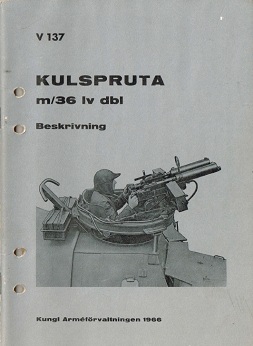


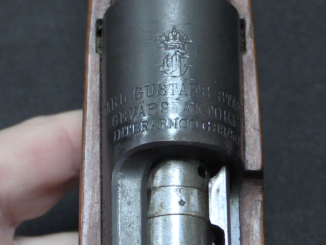
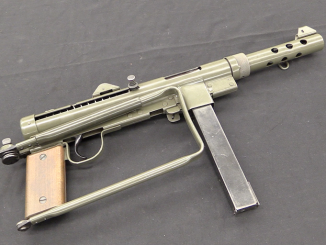
Great article! 😀
Sweden also adopted 5000 Mauser k98 chambered in 8x63mm called Gevär m/1940.It was used by the Machine gun crews. It kicked like a mule! So they added a muzzle break.The design was not a successful one, because the muzzle break was prone to falling of the barrel so it was soon withdrawn from service.
Many years ago, I saw a war movie, a guy on skis had a rifle with a muzzle break – I couldn’t work it out at the time, now I understand, Thanks.
There seem to have been several attempts at hot 8mm machinegun rounds giving magnum type performance. The 8mm Breda springs to mind as another big 8mm machinegun round paired with a 6.5mm (Carcano) service rifle.
I’ve never heard of a shoulder rifle for the H&H magnum sized Breda round.
Norway also did this with Brownings chambered for a pretty potent 8x61mm cartridge, adopted in 1929.
Will you ever make a dedicated video about the 8x63mm Bofors round and the weapons that used it? I also would love to see a video on the AK5(A, B, C, and D), especially as Sweden has started to look at new service rifles.
Doesn’t SARCO have barrels for these?
They did at one point, I don’t know if they still do.